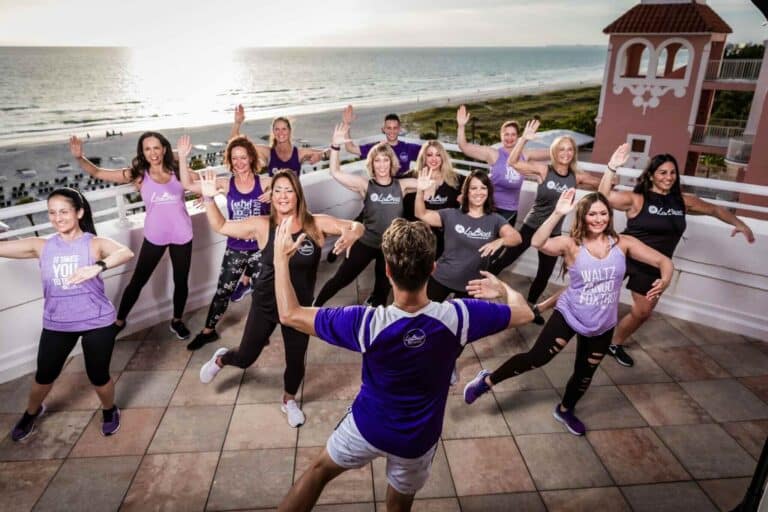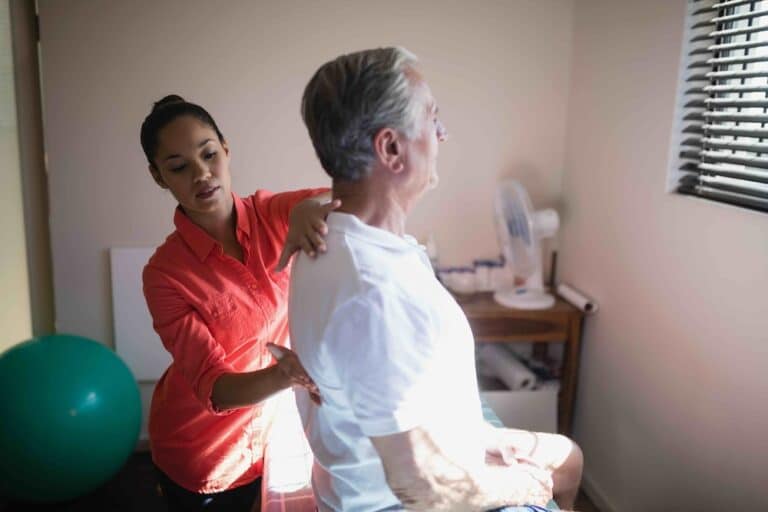While the global pandemic has accelerated a shift to digital health and wellness, the change has been a long time coming. Expanded access, increased resources, and the cost-saving benefits of digital technology have all changed the landscape of corporate wellness in modern times.
A recent study on digital health said, ‘As technological innovations become inseparable from healthcare and as healthcare systems worldwide are becoming financially unsustainable, a paradigm shift is imminent.”
Traditionally, our healthcare system has been built with a focus on the physical first: telephone your doctor, drive to the emergency room, schedule an in-office visit. This is quite different from the sort of access and immediacy that digital health provides with things like telehealth, online symptom check, and email contact with providers.
Digital health includes all components of mobile health, health information technology, wearable devices, telemedicine, and personalized medicine. At its core, digital wellness is all about increased accessibility.
Digital health leaders agree that digital health – if utilized correctly – can be more cost-effective than traditional health and wellness as it expands the toolkit available to users and saves time, money, and resources.
Additionally, it can greatly improve data capturing. Interacting electronically creates opportunities for information gathering and data recording that were not there before. This can positively impact outcomes, over time, as the data can be used to tailor treatment and support goals.
There are a few core elements to consider with digital health and wellness. As we reflect on a recent webinar with digital health leaders, we consider the implications and ways the digital health experience could be improved.
Technology: friend or foe for all?
It’s a common misconception that digital access to healthcare is not being utilized, especially by older generations or the economically disadvantaged. Unfortunately, even clinicians remain hesitant to recommend and prescribe digital health apps when the statistics say differently.
Let’s first look at some of the numbers on technology and digital health use amongst older adults from the Chief Medical Officer at AARP, Charlotte Yeh:
- In 2020, 72% of people 50 and older bought new technology and spent 194% more money on technology during COVID-19 than in previous years.
- 77% of people 70 and older use a smartphone
- Using a smartphone for health information is in the top 10 uses for > 70-year-olds
- Over half of patients, 65 and older, said they wanted to use digital health apps
Unsurprisingly, technology use is up in all populations. According to the Pew Research Center:
- A vast majority of Americans – 85% – now own a smartphone and 97% own a cellphone of some kind
- The share of Americans with lower incomes who rely on their smartphones for going online has doubled since 2013
- 72% of rural Americans say they have a broadband internet connection at home
- Eight in ten adults who live in rural communities say they use the internet on at least a daily basis
Closing the digital wellbeing gap
With the use of technology on the rise and the continued need for convenient, safe, and immediate access to healthcare, digital wellness has the advantage. As we have seen in other industries like financial services, technology has enabled more interaction without the hindrance of distance or the usual time restraints.
During the pandemic, emergency rooms and urgent care centers became make-shift COVID-19 centers, thereby driving away other healthcare seekers, both mild and serious. Digital health eliminated the need for long drives to overcrowded hospitals, public transportation to in-person appointments, and wait times in doctor offices.
During the height of the pandemic, the CDC reported a 154% increase in telehealth visits in March 2020 as compared to March 2019.
Aside from the acute need for digital health during COVID-19, access to specialists in the areas of nutrition, wellness, counseling, physical therapy, and countless others have found more accessibility as technology closes the gap.
Stacia Grosso, Staff Vice President of Digital Strategy & Operations at Anthem, says that many types of services that are less available in poor and rural settings are being opened up by a whole new world of digital resources. Grosso says the greatest potential for impact is to reduce the disparity with the most vulnerable populations.
According to many digital health industry leaders, this trend toward broader access will serve as the great “leveler of the playing field” for high-quality care with services available to more people on a more cost-effective basis.
Digital health solutions for employers
It’s not just individuals in a patient/provider relationship that benefit from opportunities in digital health and wellness. Corporations and institutions are benefiting from bringing digital wellness into their organizations. As many employees stayed home for work during COVID-19, stress levels rose and leaders became tasked with the unprecedented responsibility of providing support in remote and hybrid work settings.
Mindfulness and wellness program benefits – offered digitally – helped many employees remain productive and healthy during these times of heightened stress, said Grosso of her colleagues at Anthem.
In the past, many companies have thought of digital health tools as simply transactional. Apps and portals acted mainly as tools for checking insurance claims when something went wrong. Now, more than ever, employees and employers alike have experienced a mindset shift that places digital access to wellness and health as a valuable tool for company-wide benefit, not just mitigation or information.
In the face of the Great Resignation, organizations have an immediate need to give their employees access to support and benefits through the convenience of digital wellness. In the war for talent, Goland says companies need to “create an ecosystem where they are thinking about what people need to be their best selves and achieve their full potential.”
The bar is high for companies to provide a 21st-century capability that delivers a digital experience consistent with the best of what their employees are experiencing elsewhere.
Improving the digital health experience
With a focus on innovation and usability, digital health has experienced many changes in recent years. Ensuring that basic needs are met and social support is built-in, leaders need to focus on a few main solutions in the digital health experience.
Accessibility
When designing or selecting digital health programs, apps, and platforms, companies should focus on finding easy-to-use solutions to overcome barriers to access. Asking questions like who will use this technology? How will it be accessed? Does it meet the needs of every employee?
Keeping in mind the statistics on technology use, many companies have more options than they know. A very simple but powerful tool to broaden access to digital health tools is the use of captioning. Captioning isn’t just for people with hearing difficulties. According to Yeh, 80% of people who use on-screen text have average hearing. Captioning improves content recall, makes possible participation in crowded or public spaces, and makes digital health available for all abilities.
Burnalong has heavily invested in making the platform accessible, ADA-compliant, easy-to-use, and now with captions. Digital health does not become more valuable when fewer people have access so it has been a core tenet for optimizing our solution.
User Experience
Coupled with accessibility, user experience takes into account the needs and problems of digital health users to create an experience that is as engaging as it is useful.
As the provider, are you understanding how the end-user is experiencing your platform? This focus brings simplicity to the overall design of your company’s health technology platforms and devices. Giving users a better, more streamlined experience increases the frequency of use and reduces application issues.
Inclusive programming
When introducing or improving the technology for digital health and wellness, there are two rules. Make it universal, and make it inclusive.
Will every plan member, employee, or client be able to find value in the digital health programming you offer? Are the class leaders, therapists, and experts relatable so that your population can make a connection with them? Will your prime audience be able to see themselves in what you are providing?
AARP’s research says that only 5% of media images ever show older adults using smart technology. This is an even bigger concern if you aim to provide a solution that will resonate and be adopted by your entire population. Valuing representation is just as important as valuing advances in technology when it comes to the future of digital wellness.
The Possibilities Beyond
Humans are still hard-wired for connection. In record numbers, individuals are seeking opportunities for physical and mental health resources at their fingertips while maintaining the standards of care they are used to.
Designing and selecting health and wellness tools that decrease isolation and loneliness while connecting families, caregivers, providers, and patients creates a world of possibilities. Focusing on diversity, inclusion, equitable access, and custom support is vital for long-term success and usage of digital health solutions.
In the digital world, providing quality care and enabling access to information and support has been made easier. Through a digital health solution like Burnalong, many organizations are finding record success, increased participation, and overall elevated health of their employees.
When insurance providers, employers, and government regulators work in partnership to advance the tools, technology, and incentives in digital health, everyone wins. We’ve made incredible strides, and there’s so much further we can go.
If you would like to learn how Burnalong can support your health plan member, employees, or clients, schedule a quick call with us today.





